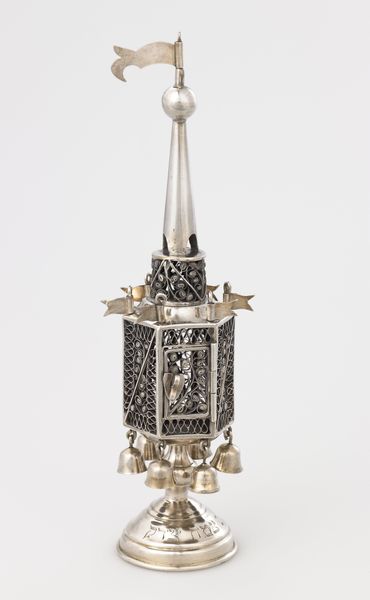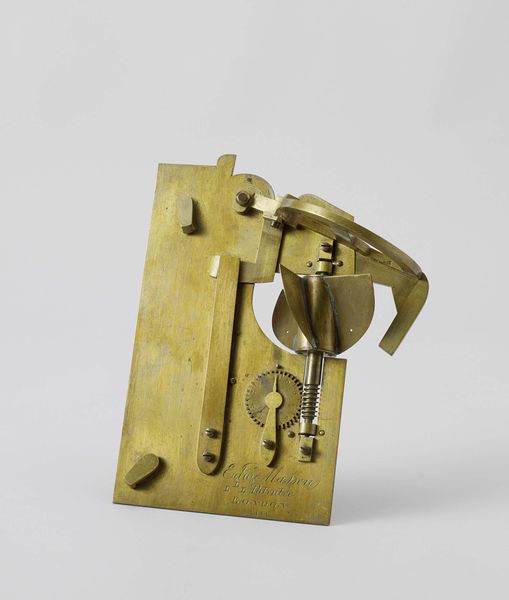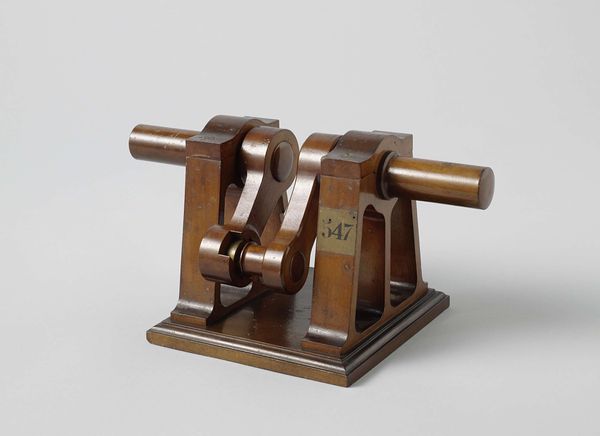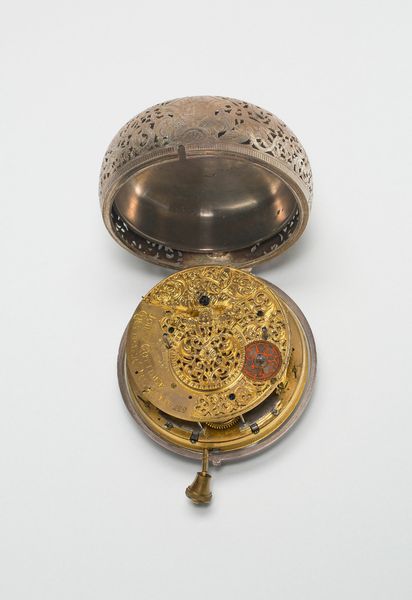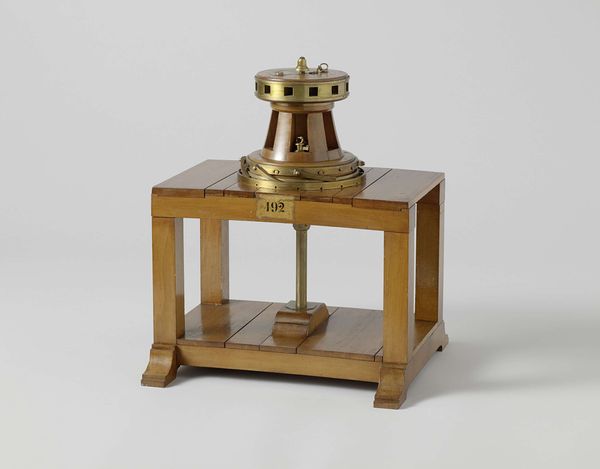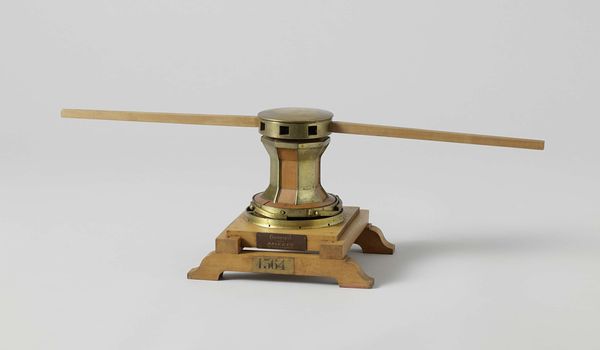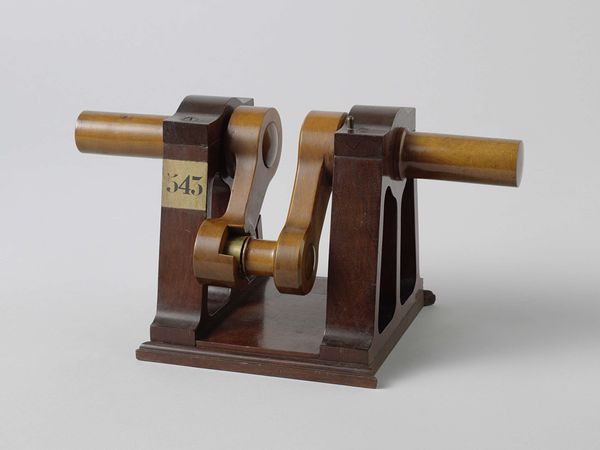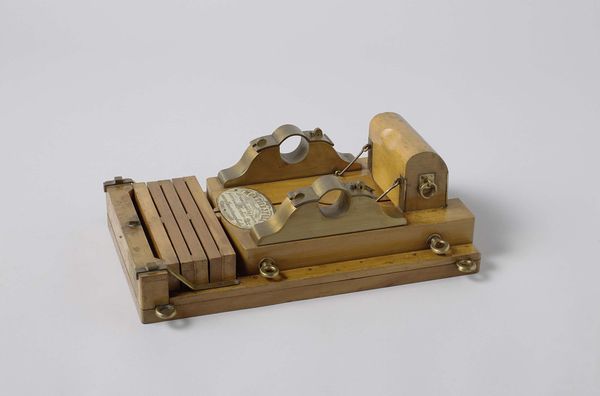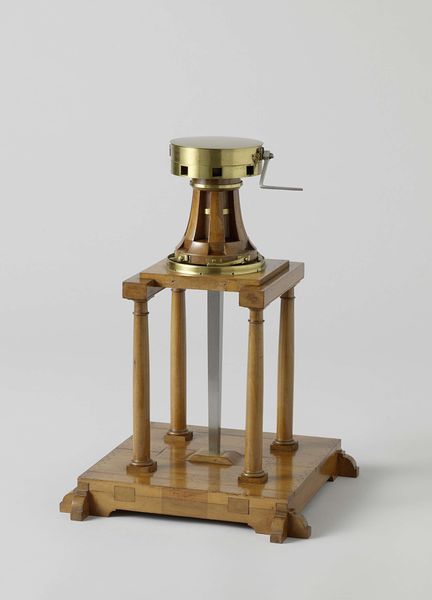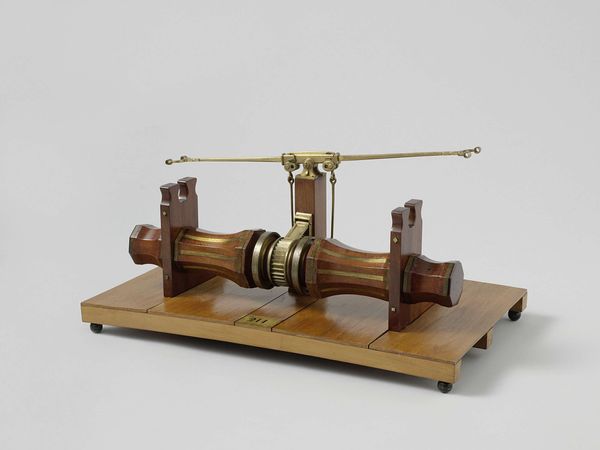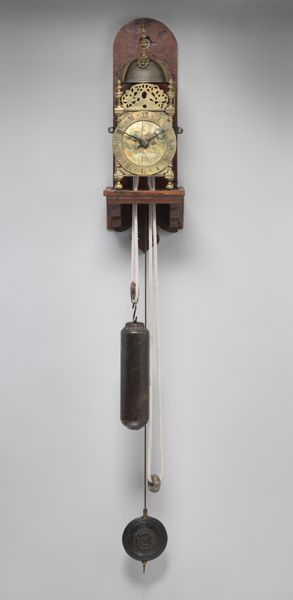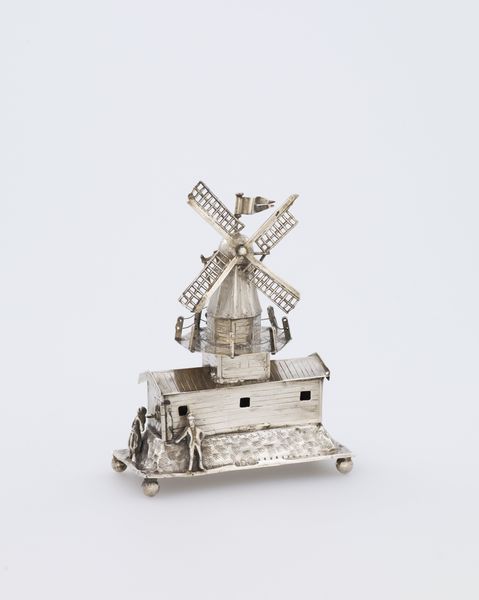
Copyright: Gio Pomodoro,Fair Use
Editor: Here we have Gio Pomodoro's "Bangle" from 1961, crafted from metal. The way the gold and silver interact is fascinating. It looks so futuristic! How should we understand a piece like this? Curator: We should begin by examining the materials themselves. Consider the choice of metal. This wasn't just any material readily available, but it has to be deliberately sourced, demanding skilled labor and specialized technologies. Editor: So you are saying the labor defines the value? Curator: Exactly. A seemingly decorative item embodies broader social and economic relationships inherent in the manufacturing process. Look closer. The contrasting textures – the smooth cylinders against the almost organic etched forms - demonstrate the artist's command over manipulating material to convey certain meaning. Do you observe this juxtaposition of precision and chance? Editor: Yes, I do. And now, seeing this, I understand that what looked like simply a "decoration" on closer inspection becomes a commentary on industry, craft, and the artist's place within it all. I missed the point. Thank you for pointing that out. Curator: Not at all, it's the careful, thoughtful making and handling of those materials which transforms raw metals into something communicative and valuable. The form may echo 'Art Deco', but its soul, its 'meaning', exists in its tangible components and production. The contrast elevates the art into something profound and unique. Editor: I see. Thinking about materials and labor really changes how I view it. Curator: Absolutely. This makes us ponder our own relationship to these artifacts we consume or appreciate.
Comments
No comments
Be the first to comment and join the conversation on the ultimate creative platform.
